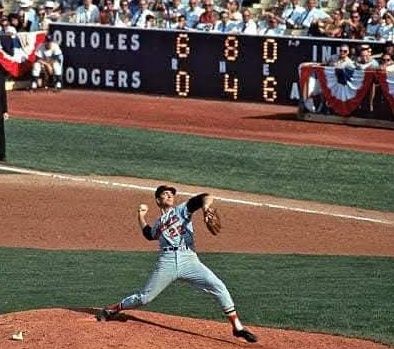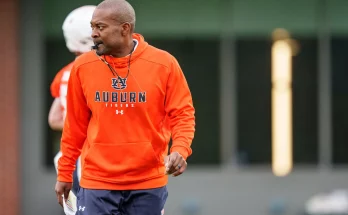20-Year-Old Jim Palmer Silences Dodgers and Koufax in Historic 1966 World Series Gem
In the long, storied history of the World Series, few performances have been as stunning—or as youthful—as the one delivered by Jim Palmer in Game 2 of the 1966 Fall Classic. At just 20 years and 356 days old, Palmer etched his name in baseball lore, becoming the youngest starting pitcher ever to win a World Series game. And he didn’t just win it—he dominated. Facing off against the legendary Sandy Koufax and the reigning champion Los Angeles Dodgers, Palmer hurled a complete game shutout, leading the underdog Baltimore Orioles to a 6-0 win at Dodger Stadium.
To understand the magnitude of Palmer’s achievement, one must first appreciate the context of the game. The Orioles were making just their second postseason appearance since relocating from St. Louis in 1954. The Dodgers, on the other hand, were a dynasty. They had won the World Series in 1965 and had been to the Fall Classic three times in the last four years. They had experience, firepower, and perhaps most significantly, they had Sandy Koufax—arguably the best pitcher of the 1960s, if not all time.
Koufax, who would later be inducted into the Hall of Fame on the first ballot, came into the game with a reputation that terrified opposing hitters. His devastating fastball and knee-buckling curve had overwhelmed lineups all season long. Despite chronic arm pain that would ultimately end his career just weeks after the ’66 Series, he was still every bit the ace. Baltimore was not expected to overpower Koufax—or the Dodgers—but Jim Palmer had other plans.
The young right-hander had already shown flashes of brilliance during the 1966 regular season, going 15-10 with a 3.46 ERA in 30 starts. But the postseason is a different animal, especially for a pitcher not yet old enough to legally drink in many states. However, Palmer took the mound in Game 2 with a poise and maturity that belied his age. What followed was a performance that shocked the baseball world.
From the opening pitch, Palmer looked locked in. He mixed his fastball and curveball with pinpoint control, keeping the Dodgers’ bats off balance all afternoon. He retired the first five batters he faced before allowing a two-out single in the second, but he quickly regrouped and never allowed the Dodgers to mount a serious threat. Over nine innings, Palmer allowed just four hits and walked three, striking out six. More importantly, he kept a potent Dodgers lineup completely off the scoreboard.
Equally impressive was the way Palmer handled pressure. With each inning, the stakes grew higher, and yet he never flinched. He worked quickly, confidently, and with an efficiency that frustrated even the most seasoned Dodgers hitters. Whenever a runner reached base, Palmer responded with either a well-timed strikeout or a double play. It was the kind of composed, strategic pitching you’d expect from a ten-year veteran, not a kid who had just turned 20 the month before.
Backing up Palmer’s brilliance was an Orioles offense that seized the moment. Though they were facing Koufax—who still had his legendary velocity—the Orioles struck early. In the fourth inning, they broke through with a pair of runs, taking advantage of a rare defensive miscue and timely hitting. They added four more in the fifth, including a home run by Paul Blair, giving Palmer a cushion he ultimately wouldn’t need but surely appreciated. Koufax, uncharacteristically vulnerable, lasted just six innings and took the loss in what would be the final start of his illustrious career.
What made Palmer’s performance even more remarkable was the gravity of the moment. The Orioles had never won a World Series game before. They were the newcomers, the supposed also-rans up against the battle-tested Dodgers. But after taking Game 1 in Los Angeles, a win in Game 2 meant the Orioles were suddenly two victories away from a championship. It was Palmer who delivered that critical second win, tilting the momentum of the series completely in Baltimore’s favor.
And momentum, once gained, was never relinquished. The Orioles went on to sweep the Dodgers in four games, with Palmer’s Game 2 masterpiece standing as the defining performance of the series. The Orioles’ pitching staff, led by Palmer, did not allow a single run over the final 33 innings of the series. It was a stunning display of dominance, made all the more surreal by the fact that it was led by a pitcher who wasn’t even 21.
Palmer’s win marked the dawn of a new era—not just for Baltimore, but for baseball. The Orioles would go on to become one of the most consistent franchises of the next two decades, appearing in six postseason series and winning two more American League pennants and another World Series title. And Jim Palmer would anchor their rotation through it all, becoming the only pitcher to win World Series games in three different decades: the 1960s, 1970s, and 1980s.
In time, Palmer would accumulate accolades that placed him among the game’s elite. He won three Cy Young Awards, was selected to six All-Star Games, and finished his career with 268 wins and a 2.86 ERA. He was inducted into the Hall of Fame in 1990, but for many fans, his defining moment came not in the twilight of his career, but at its very beginning—when a 20-year-old kid shut out the mighty Dodgers on baseball’s biggest stage.
What made Palmer’s youth so impressive wasn’t just the number attached to his age—it was the way he carried himself on the field. Teammates and coaches often remarked on his confidence and intelligence, even at such a young age. Orioles manager Hank Bauer gave him the ball for Game 2 without hesitation, believing in his talent and temperament. That trust was rewarded in full.
Even Sandy Koufax, known for his intense competitive nature, acknowledged the significance of Palmer’s performance. Though he never made excuses for his own outing, Koufax later expressed admiration for the young pitcher who outdueled him on that October day. It was a rare torch-passing moment between legends—one departing the game, the other just beginning a journey that would span two decades.
And while records are made to be broken, Palmer’s mark as the youngest starting pitcher to win a World Series game has stood the test of time. Other young stars have shined in October—names like Madison Bumgarner, José Fernández, and Dwight Gooden—but none have done what Palmer did at such a young age. His feat remains a high-water mark for precocious postseason excellence.
For Orioles fans, Palmer’s Game 2 performance is more than just a historical footnote—it’s a cherished memory, a symbol of the franchise’s golden age. In an era where experience is often seen as essential for postseason success, Palmer proved that sometimes, youth and raw talent are more than enough.
As time marches on and new stars emerge, the legend of that day in 1966 continues to grow. Jim Palmer didn’t just win a baseball game—he announced himself to the world. In doing so, he gave hope to every young player who’s ever dreamed of making an impact on the game’s grandest stage. He reminded everyone watching that age is just a number, but greatness is timeless.
So when baseball historians recall the 1966 World Series, they’ll surely mention the sweep, the Orioles’ pitching dominance, and the end of Koufax’s career. But above all, they’ll remember a 20-year-old right-hander standing tall on the mound at Dodger Stadium, unfazed by the moment, and carving his place in baseball immortality.



